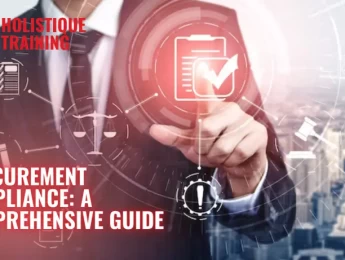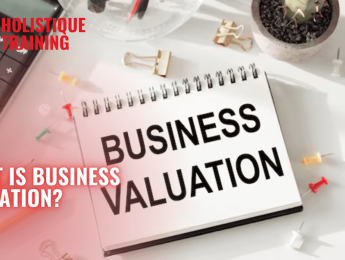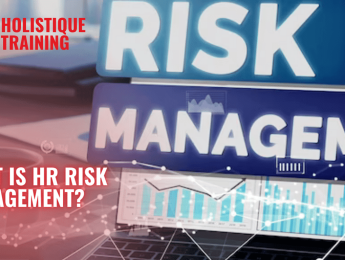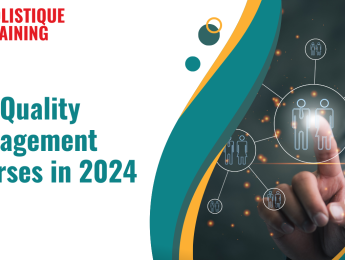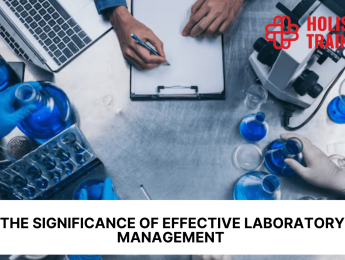- Table of Contents
- Introduction
- What Is Procurement Compliance?
- What Are the Metrics for Procurement Compliance?
- 1. Spend Under Management
- 2. Supplier Diversity
- 3. Contract Compliance
- 4. Procurement Cycle Time
- 5. Non-Compliance Incidents
- 6. Cost Savings
- 7. Regulatory Compliance
- 8. Supplier Performance
- Benefits of Effective Procurement Compliance
- Risk Mitigation
- Cost Savings
- Enhanced Supplier Relationships
- Transparency and Accountability
- Ethical Reputation
- Innovation and Sustainability
- Operational Efficiency
- Legal and Regulatory Adherence
- Continuous Improvement
- How to Develop a Procurement Compliance Framework
- 1. Policy Development
- 2. Training and Awareness
- 3. Internal Controls
- 4. Supplier Screening
- 5. Contract Management
- 6. Continuous Monitoring and Auditing
- 7. Whistleblower Programmes
- 8. Feedback and Improvement
- 9. Technology Integration
- 10. Regular Review and Update
- How to Prioritise Your Procurement Compliance Initiatives
- Risk Assessment
- Legal and Regulatory Mandates
- Operational Efficiency
- Supplier Performance
- Stakeholder Impact
- Technology Integration
- Resource Availability
- Long-Term Strategic Goals
- Benchmarking and Best Practices
- Continuous Monitoring and Adaptation
- How Technology Supports Procurement Compliance
- Automated Procurement Systems
- Real-Time Compliance Monitoring
- Data Analytics and Predictive Analysis
- Blockchain Technology
- Artificial Intelligence (AI) and Machine Learning (ML)
- Electronic Document Management
- Supplier Relationship Management (SRM) Software
- Mobile Procurement Applications
- Integration with Regulatory Databases
- Conclusion
Introduction
Procurement compliance is more than just a set of rules and regulations. It's a strategic framework that organisations can leverage to enhance transparency, reduce risks, and drive cost savings. In this blog post, we'll explore what procurement compliance entails, how to measure it effectively, the numerous benefits it offers, and the steps to develop a robust compliance framework. We'll also discuss how to prioritise your compliance initiatives and the pivotal role technology plays in ensuring compliance across the procurement process.
What Is Procurement Compliance?
At its core, procurement compliance refers to the adherence to legal, ethical, and internal regulations and guidelines in the procurement process. It ensures that organisations conduct their procurement activities in a manner that promotes fairness, integrity, and accountability. This involves complying with laws and standards, such as anti-corruption legislation, supplier diversity regulations, and environmental mandates, among others.
Effective procurement compliance hinges on creating a culture of responsibility within the organisation. It involves defining and communicating procurement policies and procedures, training employees, and implementing robust controls to monitor compliance. By doing so, organisations can mitigate legal and reputational risks while promoting a trustworthy and sustainable procurement process.
What Are the Metrics for Procurement Compliance?
Metrics are the quantitative measures used to assess various aspects of procurement compliance within an organisation. They provide valuable insights into the effectiveness of compliance efforts, helping businesses identify strengths, weaknesses, and areas that require improvement. Here are the key metrics for procurement compliance:
1. Spend Under Management
Spend under management is a fundamental metric that measures the percentage of an organisation's total spend that is actively controlled and managed through the procurement process. This metric gauges how well an organisation is managing its resources. A higher percentage indicates that the procurement department has control over a significant portion of the organisation's expenditure. It reflects the organisation's ability to negotiate better contracts, consolidate purchases, and leverage supplier relationships, leading to cost savings and compliance with procurement policies.
2. Supplier Diversity
Supplier diversity is a crucial metric that assesses the organisation's commitment to engaging with a diverse range of suppliers. It includes evaluating the percentage of procurement spend allocated to suppliers from various backgrounds, such as minority-owned, women-owned, veteran-owned, and small businesses. By promoting supplier diversity, organisations contribute to economic growth in different communities while adhering to regulatory requirements and ethical standards.
3. Contract Compliance
Contract compliance measures the extent to which suppliers adhere to the terms and conditions outlined in contracts. It involves evaluating factors such as timely delivery, product or service quality, pricing accuracy, and adherence to agreed-upon service levels. Monitoring contract compliance ensures that suppliers fulfil their obligations, maintaining the integrity of procurement agreements and safeguarding the organisation from legal disputes and financial losses.
4. Procurement Cycle Time
Procurement cycle time measures the duration it takes to complete the entire procurement process, from identifying a need to supplier selection, negotiation, and contract finalisation. Shortening the procurement cycle time is essential for operational efficiency. By reducing the time it takes to source goods or services, organisations can respond quickly to market demands, capitalise on cost-saving opportunities, and maintain agility in their operations.
5. Non-Compliance Incidents
This metric tracks the number and severity of compliance violations within the procurement process. Incidents can range from minor policy infractions to significant breaches of legal or ethical standards. By monitoring and categorising non-compliance incidents, organisations can identify patterns, root causes, and recurring issues. This information is invaluable for implementing targeted corrective actions and preventive measures, ensuring a more compliant procurement environment.
Metric | Description | Importance |
Spend Under Management | Percentage of managed procurement spend. | Indicates procurement control. |
Supplier Diversity | Percentage spent on diverse supplier groups. | Enhances social responsibility. |
Contract Compliance | Rate of supplier adherence to contracts. | Ensures legal and quality compliance. |
Procurement Cycle Time | Time taken to complete a procurement cycle. | Measures process efficiency. |
Regulatory Compliance | Degree of adherence to legal requirements. | Avoids legal penalties. |
Table 1: Key Procurement Compliance Metrics
6. Cost Savings
Cost savings are a tangible metric that quantifies the financial benefits derived from effective procurement practices. By negotiating favourable terms with suppliers, optimising contracts, and identifying alternative sourcing options, organisations can reduce procurement costs significantly. Cost savings demonstrate the direct impact of compliance efforts on the organisation's bottom line, showcasing the value of adherence to procurement policies and regulations.
7. Regulatory Compliance
This metric evaluates the organisation's adherence to external laws, regulations, and industry standards governing procurement activities. It includes compliance with anti-corruption laws, environmental regulations, labour standards, and trade policies, among others. Ensuring regulatory compliance is critical to avoiding legal penalties, reputational damage, and operational disruptions. Regular audits and assessments are conducted to verify compliance with these external requirements.
8. Supplier Performance
Supplier performance metrics assess the effectiveness of suppliers in meeting the organisation's requirements. Key performance indicators (KPIs) may include on-time delivery rates, defect rates, responsiveness to inquiries, and adherence to quality standards. By evaluating supplier performance, organisations can identify reliable partners, foster long-term relationships, and maintain a high level of service quality and compliance with contractual obligations.
In summary, these metrics provide a comprehensive view of an organisation's procurement compliance efforts. By continuously monitoring and analysing these metrics, businesses can identify areas for improvement, implement targeted strategies, and ensure that their procurement practices align with legal, ethical, and operational standards. This proactive approach not only minimises risks but also maximises the benefits of a compliant and efficient procurement process.
Benefits of Effective Procurement Compliance
The advantages of implementing a robust procurement compliance framework extend far beyond mere regulatory adherence. Here are some key benefits:
Risk Mitigation
One of the primary benefits of effective procurement compliance is risk mitigation. By adhering to legal, ethical, and internal regulations, organisations safeguard themselves from potential legal actions, fines, and reputational damage. Compliance ensures that procurement activities are conducted transparently and responsibly, reducing the risk of legal disputes and regulatory violations.
Cost Savings
Compliance initiatives often lead to cost savings. By negotiating better contracts, optimising supplier relationships, and identifying more efficient procurement processes, organisations can significantly reduce their operational costs. Compliance ensures that procurement activities are streamlined, eliminating unnecessary expenses and maximising the value derived from supplier agreements.
Enhanced Supplier Relationships
Effective procurement compliance fosters strong and transparent relationships with suppliers. When organisations adhere to their contractual obligations and payment terms, suppliers are more likely to offer favourable prices, higher quality products or services, and improved delivery timelines. Trustworthy supplier relationships are invaluable, ensuring a stable supply chain and fostering collaboration and innovation.
Transparency and Accountability
Compliance initiatives promote transparency and accountability within the organisation. Clear procurement policies and procedures, along with stringent compliance monitoring, ensure that every step of the procurement process is traceable and auditable. This transparency builds trust among stakeholders, including employees, customers, investors, and regulatory authorities. Accountability ensures that employees are aware of their responsibilities, reducing the likelihood of fraudulent activities and unethical behaviour.
Ethical Reputation
Organisations that prioritise procurement compliance establish a reputation for ethical and responsible business practices. Ethical sourcing, fair treatment of suppliers, and adherence to labour standards contribute to a positive public image. Customers and partners are more likely to engage with businesses that demonstrate a commitment to ethical procurement practices, leading to increased trust and brand loyalty.
Innovation and Sustainability
Compliance efforts often drive innovation and sustainability in procurement. Organisations committed to compliance are more likely to explore environmentally friendly sourcing options, sustainable materials, and energy-efficient products or services. By integrating sustainability into the procurement process, businesses contribute to environmental preservation and appeal to environmentally conscious consumers.
Operational Efficiency
Compliance initiatives streamline procurement processes, leading to improved operational efficiency. Clear policies and standardised procedures reduce the time and effort required for procurement activities. Automation of compliance checks, approvals, and documentation further accelerates the process. Efficient procurement operations ensure that resources are allocated optimally, enhancing overall productivity.
Legal and Regulatory Adherence
Meeting legal and regulatory requirements is not just a necessity; it's a strategic advantage. Compliance ensures that organisations operate within the boundaries of the law, avoiding fines, penalties, and legal disputes. By staying ahead of changing regulations, businesses can adapt their procurement strategies proactively, mitigating risks associated with non-compliance.
Continuous Improvement
Organisations committed to procurement compliance are constantly seeking ways to improve their processes. Regular audits, feedback mechanisms, and data analysis help identify areas for enhancement. Continuous improvement initiatives ensure that compliance efforts evolve with changing regulations and industry best practices, making the organisation more resilient in the face of challenges.
In short, effective procurement compliance is a cornerstone of responsible business conduct. Beyond the legal requirements, it offers a wide array of advantages, ranging from financial savings and supplier relationships to ethical reputation and operational efficiency. By investing in compliance initiatives, organisations not only protect themselves from risks but also create a sustainable and ethical procurement ecosystem that benefits all stakeholders involved.
How to Develop a Procurement Compliance Framework
Creating a robust procurement compliance framework requires careful planning and execution. Here are the steps to develop one:
1. Policy Development
Begin by establishing clear and comprehensive procurement policies. These policies should outline the organisation's approach to procurement, including ethical guidelines, legal requirements, supplier expectations, and employee responsibilities. Policies should be easily accessible to all employees and regularly updated to reflect changes in regulations or organisational needs.
2. Training and Awareness
Conduct training programmes to educate employees about the established procurement policies and procedures. Training should be tailored to different roles within the organisation, ensuring that employees understand their specific compliance responsibilities. Regular awareness campaigns and workshops can reinforce the importance of compliance and keep employees informed about the latest developments in procurement regulations.
3. Internal Controls
Implement robust internal controls to monitor compliance effectively. Automated procurement systems can enforce compliance by incorporating approval workflows, ensuring that every purchase request follows the prescribed authorisation process. Audit trails and real-time monitoring features can track changes, approvals, and procurement activities, providing a transparent view of the entire process.
4. Supplier Screening
Develop procedures for screening and evaluating potential suppliers. Supplier screening should include assessments of their compliance history, financial stability, ethical practices, and reputation. Implement a vendor management system that allows ongoing monitoring of supplier compliance, ensuring that suppliers adhere to agreed-upon terms and regulations throughout the partnership.
5. Contract Management
Establish robust contract management processes. Contracts should be reviewed thoroughly by legal and procurement teams to ensure they align with organisational policies and regulations. Include clear terms and conditions, performance metrics, and penalty clauses for non-compliance. Implement regular contract reviews to assess supplier adherence and identify any deviations from the agreed-upon terms.
6. Continuous Monitoring and Auditing
Regularly monitor procurement activities and conduct internal audits to identify and rectify non-compliance issues. Internal audit teams should perform periodic assessments to evaluate the effectiveness of compliance measures. These audits help in identifying areas of improvement, ensuring that policies are followed, and detecting potential risks before they escalate.
7. Whistleblower Programmes
Establish confidential whistleblower programmes that allow employees, suppliers, and other stakeholders to report compliance concerns anonymously. Whistleblower programmes create a safe environment for reporting potential violations without fear of retaliation. Reports received through these channels should be thoroughly investigated, and appropriate actions should be taken based on the findings.
8. Feedback and Improvement
Encourage feedback from employees, suppliers, and other stakeholders regarding the procurement compliance framework. Regularly solicit input to identify areas for improvement and refine existing processes. Act on constructive feedback promptly, incorporating necessary changes into the framework. Continuous feedback loops ensure that the compliance framework remains adaptable and responsive to evolving challenges.
9. Technology Integration
Leverage technology to strengthen the procurement compliance framework. Implement advanced procurement software that automates compliance checks, tracks procurement metrics, and generates real-time reports. Utilise data analytics tools to identify patterns, trends, and potential compliance risks. Technology can enhance the efficiency of compliance monitoring, allowing organisations to proactively address issues and maintain a high level of compliance.
10. Regular Review and Update
Regularly review the procurement compliance framework to ensure its relevance and effectiveness. Regulatory environments and business landscapes are constantly evolving, necessitating periodic updates to policies and procedures. Conduct comprehensive reviews, incorporating lessons learned from past experiences and industry best practices. Keep the framework agile, allowing it to adapt to changing compliance requirements and organisational needs.
In summary, developing a procurement compliance framework involves a comprehensive approach encompassing clear policies, employee training, robust internal controls, supplier screening, contract management, continuous monitoring, whistleblower programmes, stakeholder feedback, technology integration, and regular reviews. By following these steps and fostering a culture of compliance within the organisation, businesses can establish a resilient and effective procurement compliance framework that ensures adherence to regulations, ethical standards, and best practices.
How to Prioritise Your Procurement Compliance Initiatives
While creating a comprehensive compliance framework is essential, prioritisation is crucial to manage resources efficiently. Here's how to prioritise your procurement compliance initiatives:
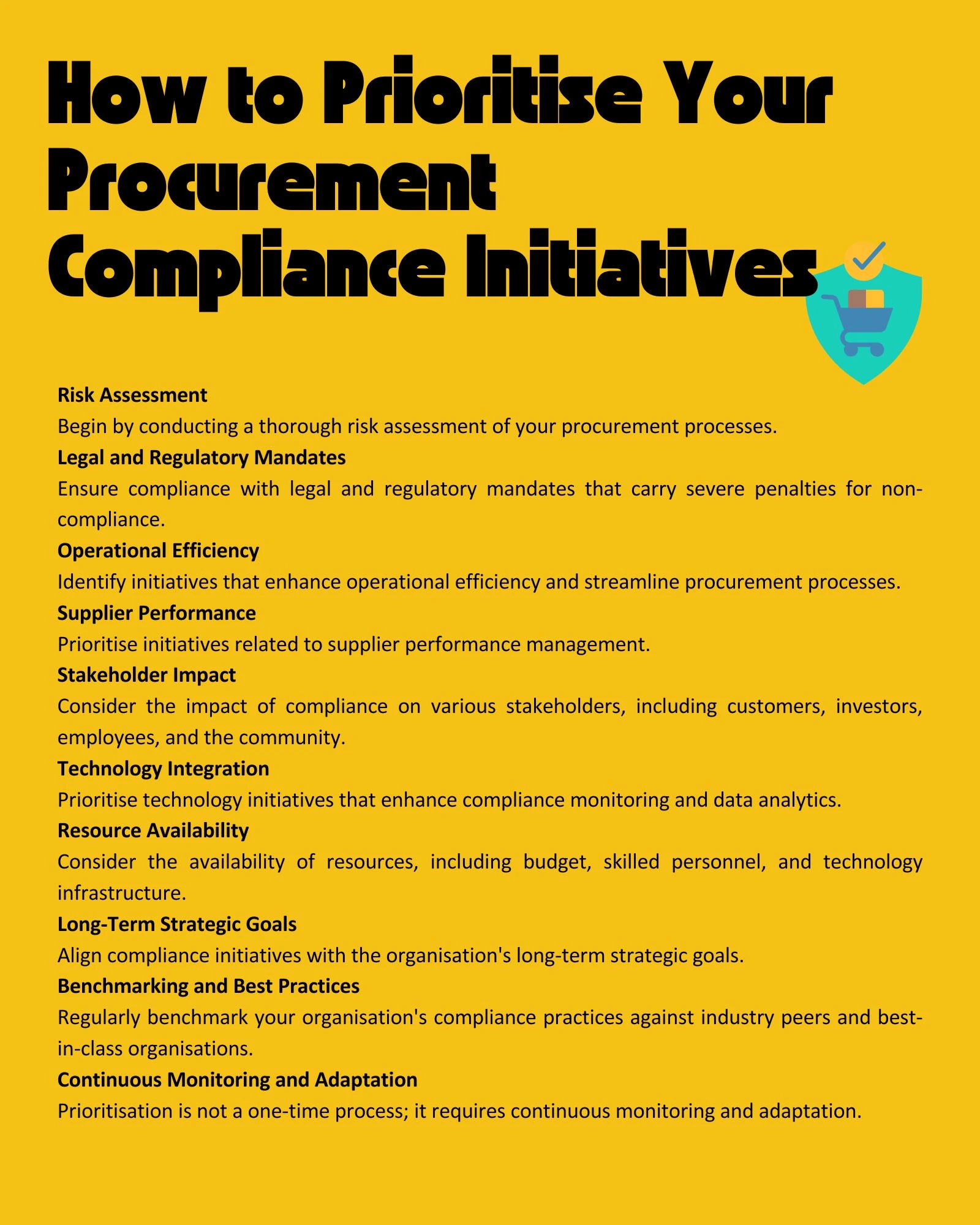
Risk Assessment
Begin by conducting a thorough risk assessment of your procurement processes. Identify potential compliance risks related to legal requirements, supplier relationships, industry standards, and internal policies. Categorise these risks based on their impact and likelihood of occurrence. Prioritise initiatives that address high-impact, high-probability risks to mitigate the most significant threats first.
Legal and Regulatory Mandates
Ensure compliance with legal and regulatory mandates that carry severe penalties for non-compliance. Prioritise initiatives related to tax regulations, anti-corruption laws, environmental standards, labour laws, and other industry-specific regulations. Staying in line with these mandates is not only a legal obligation but also a fundamental aspect of ethical and responsible business conduct.
Operational Efficiency
Identify initiatives that enhance operational efficiency and streamline procurement processes. Prioritise projects that eliminate bottlenecks, reduce manual intervention, and improve the overall workflow. Initiatives such as implementing procurement software, automating approval processes, and optimising supplier onboarding procedures can significantly enhance operational efficiency and compliance simultaneously.
Supplier Performance
Prioritise initiatives related to supplier performance management. Focus on key suppliers and initiatives that ensure they meet contractual obligations, adhere to quality standards, and deliver goods or services on time. Implement supplier scorecards and regular performance reviews to track supplier compliance. Strengthening relationships with reliable suppliers contributes to compliance and fosters long-term partnerships.
Stakeholder Impact
Consider the impact of compliance on various stakeholders, including customers, investors, employees, and the community. Prioritise initiatives that mitigate harm to these stakeholders. For example, initiatives promoting ethical sourcing and environmental sustainability resonate positively with environmentally conscious customers. Demonstrating social responsibility and ethical business practices enhances the organisation's reputation and stakeholder trust.
Technology Integration
Prioritise technology initiatives that enhance compliance monitoring and data analytics. Implementing advanced procurement software with compliance modules can automate checks, generate real-time reports, and flag potential issues. Data analytics tools can help identify compliance trends, enabling proactive measures. Investing in technology streamlines compliance efforts, making them more efficient and accurate.
Resource Availability
Consider the availability of resources, including budget, skilled personnel, and technology infrastructure. Prioritise initiatives that align with the available resources. Evaluate the feasibility and cost-effectiveness of each initiative before implementation. This ensures that the organisation can sustain the compliance efforts without overstretching its resources.
Long-Term Strategic Goals
Align compliance initiatives with the organisation's long-term strategic goals. Prioritise initiatives that contribute to the achievement of these goals. For instance, if expanding into new markets is a strategic objective, prioritise compliance initiatives related to international trade regulations and market-specific compliance requirements. Integrating compliance with strategic planning ensures that compliance efforts support the organisation's overall growth and sustainability.
Benchmarking and Best Practices
Regularly benchmark your organisation's compliance practices against industry peers and best-in-class organisations. Identify initiatives that have proven successful for similar businesses and prioritise their implementation. Learning from the best practices of others can provide valuable insights and accelerate the organisation's compliance journey.
Continuous Monitoring and Adaptation
Prioritisation is not a one-time process; it requires continuous monitoring and adaptation. Regularly assess the effectiveness of implemented initiatives. Identify new compliance challenges and emerging risks. Based on these assessments, adjust your priorities to address evolving compliance requirements effectively. Flexibility and adaptability are key to maintaining a proactive approach to compliance management.
In summary, prioritising procurement compliance initiatives involves a strategic and systematic approach. By conducting thorough risk assessments, ensuring legal adherence, enhancing operational efficiency, considering stakeholder impact, integrating technology, managing resources wisely, aligning with long-term goals, learning from best practices, and embracing adaptability, organisations can effectively prioritise their efforts. A well-prioritised compliance strategy not only mitigates risks but also contributes to organisational resilience, reputation enhancement, and sustainable growth.
How Technology Supports Procurement Compliance
Technology plays a pivotal role in supporting procurement compliance efforts, enhancing efficiency, transparency, and accuracy throughout the procurement process. In 2021, chief procurement officers (CPOs) dedicated a significant portion of their time, around 10 to 20%, to compliance management, according to Whatfix. Notably, more than half of CPOs emphasised compliance and risk management as primary areas for digitisation efforts, and for good reason. Here's how technology supports procurement compliance:
Automated Procurement Systems
Implementing automated procurement systems streamlines the entire procurement lifecycle. These systems enforce compliance by ensuring that every step, from requisition to payment, adheres to established policies and procedures. Automated systems feature predefined approval workflows, ensuring that purchases are authorised by the appropriate personnel. By automating routine tasks, organisations reduce the risk of human errors and ensure consistent adherence to compliance guidelines.
Real-Time Compliance Monitoring
Advanced procurement software allows for real-time monitoring of procurement activities. Compliance checks are automated, and any deviations from established policies trigger immediate alerts. Real-time monitoring provides actionable insights, enabling organisations to address compliance issues promptly. It also ensures that compliance is maintained throughout the procurement process, reducing the likelihood of non-compliant activities slipping through the cracks.
Data Analytics and Predictive Analysis
Data analytics tools enable organisations to analyse vast amounts of procurement data, identifying patterns, trends, and potential compliance risks. Predictive analytics can forecast future compliance issues based on historical data, allowing organisations to take proactive measures. By leveraging data-driven insights, organisations can optimise procurement strategies, identify areas of improvement, and ensure compliance with regulations and internal policies.
Blockchain Technology
Blockchain technology provides a secure and transparent way to record and verify procurement transactions. By creating an immutable and decentralised ledger of all procurement activities, organisations can enhance trust and traceability. Blockchain ensures the integrity of procurement data, reducing the risk of tampering or fraudulent activities. Smart contracts, powered by blockchain, automatically enforce compliance rules, ensuring that contractual agreements are met before transactions are approved.
Artificial Intelligence (AI) and Machine Learning (ML)
AI and ML technologies can automate compliance monitoring and analysis. These technologies can detect anomalies and patterns in procurement data, flagging potential compliance issues for further investigation. AI-powered chatbots can assist employees in adhering to procurement policies by providing real-time guidance and answering compliance-related queries. Machine learning algorithms can learn from historical compliance data, improving their accuracy in identifying potential risks over time.
Electronic Document Management
Digital document management systems ensure that all procurement-related documents are organised, easily accessible, and compliant with retention requirements. These systems enable secure storage of contracts, purchase orders, invoices, and other procurement documents. Digital documentation ensures that records are accurate, up-to-date, and readily available for audits or compliance checks, simplifying the compliance verification process.
Supplier Relationship Management (SRM) Software
SRM software facilitates effective management of supplier relationships, ensuring that suppliers adhere to compliance requirements. These systems track supplier performance, assess their adherence to contractual terms, and monitor their compliance with quality standards and delivery timelines. SRM software fosters collaboration and communication between organisations and suppliers, promoting a mutually beneficial relationship based on compliance and trust.
Mobile Procurement Applications
Mobile procurement applications empower employees to make procurement-related decisions on the go while ensuring compliance. These applications provide access to procurement policies, approval workflows, and compliance guidelines directly from mobile devices. Mobile apps enable timely approvals, ensuring that procurement activities remain compliant even when employees are away from their desks. They also enhance user experience, encouraging employees to adhere to compliance protocols seamlessly.
Integration with Regulatory Databases
Procurement systems can be integrated with external databases containing regulatory information. These integrations provide real-time updates on changes in regulations, ensuring that procurement policies are always up-to-date and compliant with the latest legal requirements. By staying informed about regulatory changes, organisations can adjust their procurement processes proactively, mitigating the risk of non-compliance.
In summary, technology acts as a catalyst for procurement compliance, enabling organisations to automate processes, monitor activities in real time, analyse vast amounts of data, ensure data integrity, and enhance communication with stakeholders. By leveraging advanced technologies, organisations can establish a proactive and efficient approach to procurement compliance, minimising risks, optimising processes, and ensuring adherence to regulations and ethical standards.
Conclusion
Procurement compliance is a multifaceted strategy that not only safeguards your organisation from risks but also drives efficiency and fosters responsible business practices. By developing a comprehensive compliance framework, prioritising initiatives, and harnessing technology, you can create a procurement process that is not only legally sound but also a source of competitive advantage and sustainability. Embrace procurement compliance as a strategic imperative, and your organisation will reap the myriad benefits it offers.
Incorporate the power of knowledge and expertise into your procurement journey by enrolling in our cutting-edge course, ‘Procurement Sector Category Management.’ Elevate your skills, master compliance strategies, and stay ahead of the curve in the dynamic business landscape. Transform your procurement process into a beacon of excellence, ensuring unmatched efficiency, compliance, and enduring success for your organisation. Don't miss this opportunity to revolutionise your approach to procurement and propel your career to new heights!


